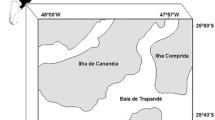Abstract
Most of our understanding of dolphin echolocation has come from studies of captive dolphins performing various echolocation tasks. Recently, measurements of echolocation signals in the wild have expanded our understanding of the characteristics of these signals in a natural setting. Measuring undistorted dolphin echolocation signals with free swimming dolphins in the field can be a challenging task. A four hydrophone array arranged in a symmetrical star pattern was used to measure the echolocation signals of four species of dolphins in the wild. Echolocation signals of the following dolphins have been measured with the symmetrical star array: white-beaked dolphins in Iceland, Atlantic spotted dolphins in the Bahamas, killer whales in British Columbia, and dusky dolphins in New Zealand. There are many common features in the echolocation signals of the different species. Most of the signals had spectra that were bimodal: two peaks, one at low frequencies and another about an octave higher in frequency. The source level of the sonar transmission varies as a function of 20logR, suggesting a form of time-varying gain but on the transmitting end of the sonar process rather than the receiving end. The results of the field work call into question the issue of whether the signals used by captive dolphins may be shaped by the task they are required to perform rather than what they would do more naturally.
Similar content being viewed by others
References
W. W. L. Au, D. A. Carder, R. H. Penner, and B. L. Scronce, J. Acoust. Soc. Am. 77, 726 (1985).
W. W. L. Au, J. L. Pawloski, P. E. Nachtigall, et al., J. Acoust. Soc. Am. 98, 51 (1995).
W. W. L. Au and D. L. Herzing, J. Acoust. Soc. Am. 113, 598 (2003).
M. H. Rasmussen, L. A. Miller, and W. W. L. Au, J. Acoust. Soc. Am. 111, 1122 (2002).
W. W. L. Au, J. K. B. Ford, J. K. Home, and K. A. Allman, J. Acoust. Soc. Am. (in press).
W. W. L. Au and B Wursig, J. Acoust. Soc. Am. (in press).
W. W. L. Au, The Sonar of Dolphins (Springer, New York, 1993).
W. W. L. Au and K. J. Benoit-Bird, Nature 423, 861 (2003).
L. A. Simmons, A. J. M. Moffat, and W. M. Masters, J. Acoust. Soc. Am. 91, 1150 (1992).
R. J. Urick, Principles of Underwater Sound, 3rd ed. (McGraw-Hill, New York, 1983; Sudostroenie, Leningrad, 1978).
A. W. Rihaczek, Principles of High-Resolution Radar (McGraw-Hill, New York, 1969).
D. R. Ketten, in Hearing by Whales and Dolphins, Ed. by W. W. L. Au, A. N. Popper, and R. R. Fay (Springer, New York, 2000), pp. 43–108.
M. R. Heithaus and L. M. Dill, in Encyclopedia of Marine Mammals, Ed. by W. F. Perrin, B. Wursig, and J. G. M. Thewissen (Academic, San Diego, 2002), pp. 411–422.
W. W. Evans and B. A. Powell, in Animal Sonar Systems: Biology and Bionics, Ed. by R. G. Busnel (Laboratoire de Physiologic Acoustique, Jouy-en-Josas, 1967), pp. 363–382.
B. P. Morozov, A. E. Akopian, V. Burdin, et al., Biofizika 17, 139 (1972).
T. Cranford, in Animal Sonar: Processes and Performance, Ed. by P. E. Nachtigall and P. W. B. Moore (Plenum, New York, 1988), pp. 67–77.
T. Cranford, in Hearing by Whales and Dolphins, Ed. by W. W. L. Au, A. N. Popper, and R. R. Fay (Springer, New York, 2000), pp. 109–155.
S. H. Ridgway, D. A. Carder, T. Kamonick, et al., J. Exp. Biol. 204, 3829 (2001).
R. H. Penner, in Animal Sonar: Processes and Performance, Ed. by P. E. Nachtigall and P. W. B. Moore (Plenum, New York, 1988), pp. 707–713.
J. K. B. Ford, E. M. Graeme, L. G. Barrett-Lennard, et al., Can. J. Zool. 76, 1456 (1998).
R. H. Love, J. Acoust. Soc. Am. 49, 816 (1971).
Author information
Authors and Affiliations
Additional information
From Akusticheski\(\overset{\lower0.5em\hbox{$\smash{\scriptscriptstyle\smile}$}}{l} \) Zhurnal, Vol. 50, No. 4, 2004, pp. 533–542.
Original English Text Copyright © 2004 by Au.
This article was submitted by the author in English.
Rights and permissions
About this article
Cite this article
Au, W.W.L. Echolocation signals of wild dolphins. Acoust. Phys. 50, 454–462 (2004). https://doi.org/10.1134/1.1776224
Received:
Issue Date:
DOI: https://doi.org/10.1134/1.1776224




